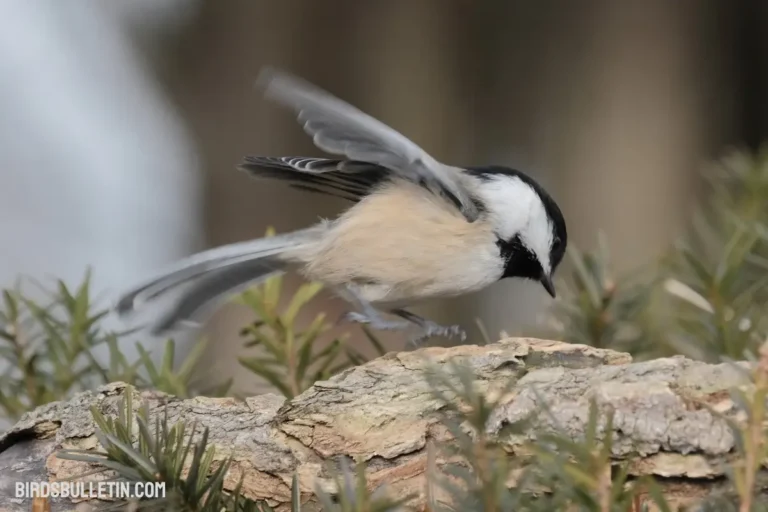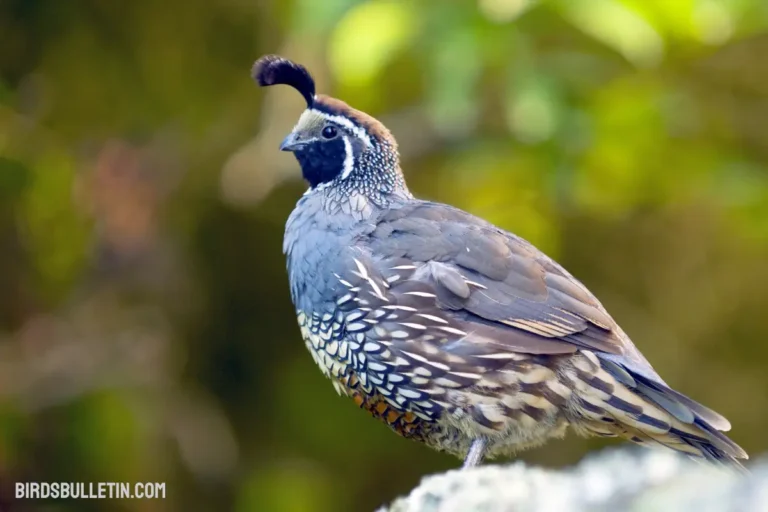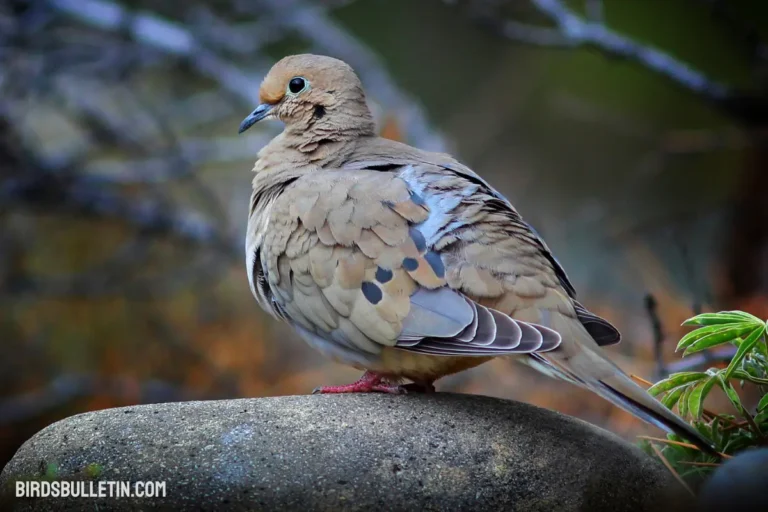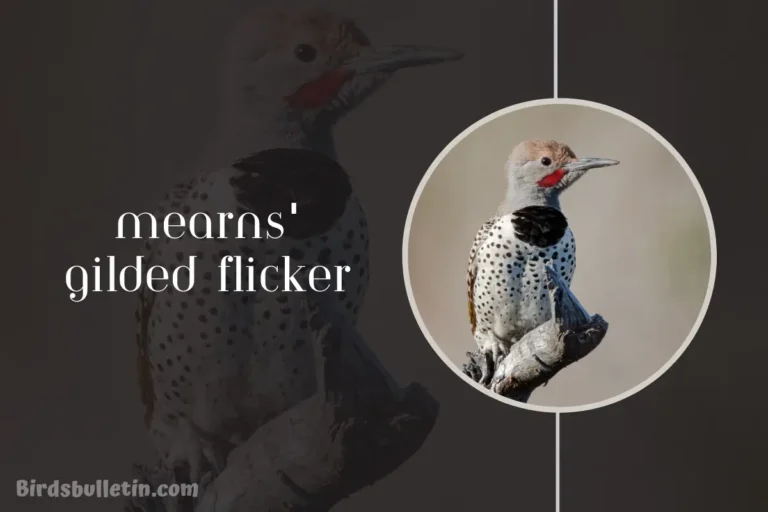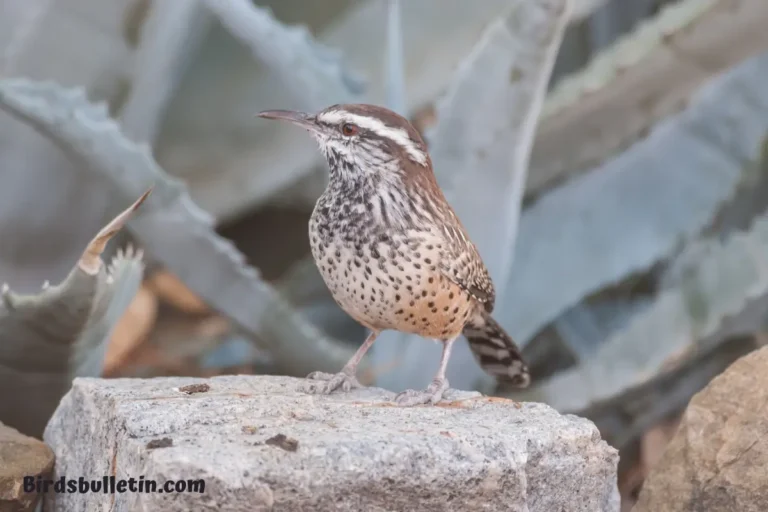Boreal Chickadee: Behavior And More
The boreal chickadee (Poecile hudsonicus) is a tiny songbird belonging to the chickadee family Paridae. Ranging across the northern forests of North America, these active and acrobatic birds provide a splash of lively sound and motion against the stillness of their coniferous habitat.
Read on to learn more about identifying, the behavior, populations, and conservation status of the boreal chickadee.
Want to learn more about Birds Overview
Boreal Chickadee Profile
| Feature | Description |
|---|---|
| Scientific Name | Poecile hudsonicus |
| Alternative Name | Hudsonian Chickadee, Acadian Chickadee, Tom-tit |
| Color | Brownish-gray upperparts, white underparts, black cap and bib, white cheeks |
| Size | 6 inches |
| Wingspan | 8.25 inches |
| Weight | 10 grams |
| Lifespan | 2 years (max 7 years) |
| Breeding Season | April – July |
| Lay Eggs | 5-9 eggs per clutch, 1 brood per season |
| Diet and Prey | Insects, spiders, seeds, berries |
| Threats and Predators | Hawks, falcons, owls, squirrels, snakes |
| Locations | Canada, Alaska, Northern US |
Identification Step-By-Step
Here are tips for identifying the boreal chickadee:
Small size – About 5 inches in length, similar in size to a black-capped chickadee
Color pattern – Grayish-brown back, whitish underside, black cap and bib, white cheeks
Song – Nasal “fee-bee” whistles; slower and more drawn out than black-capped chickadee
Call – Harsh “chick-a-dee-dee” calls; deeper tone than black-capped
Range – Found in northern coniferous forests across Canada, Alaska, and the northern U.S.
Behavior – Forages actively in trees; sociable even outside the breeding season
State Bird And Symbol
The boreal chickadee is the state bird of Maine and Massachusetts. Its representation as a state symbol in the northeastern U.S. reflects the species’ strong association with the region’s iconic northern forests.
The northern forests have shaped Maine and Massachusetts’ history and culture through activities like logging.
Species Or Subspecies
The boreal chickadee is considered a distinct species, Poecile hudsonicus. However, some authorities classify it as a subspecies of the black-capped chickadee, Poecile atricapillus hudsonicus.
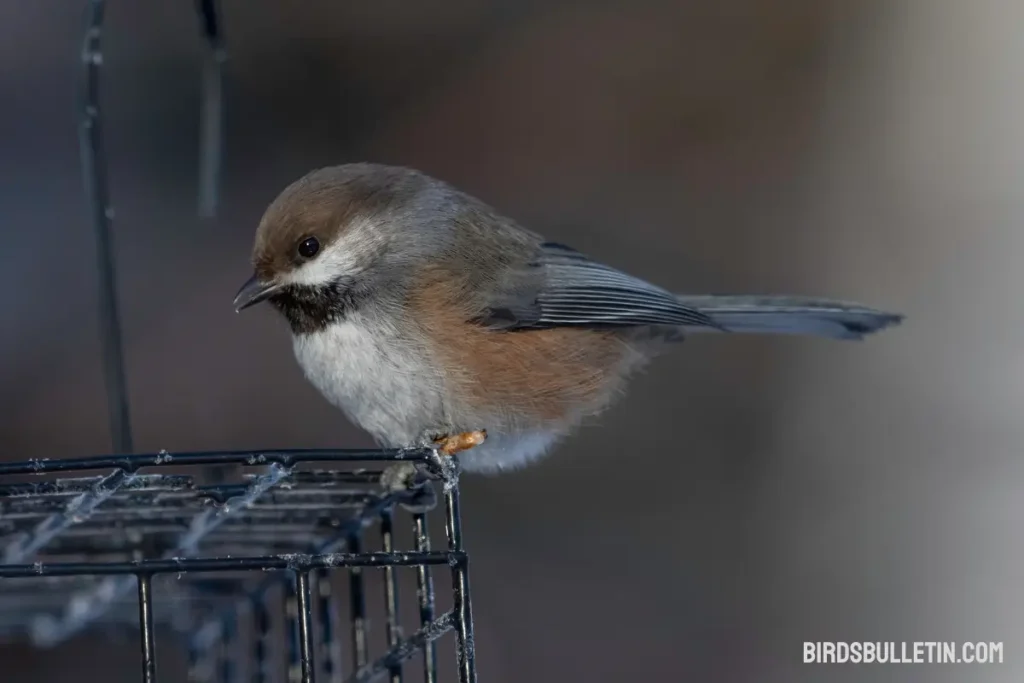
This is based on the fact that the two chickadees hybridize across a narrow band of their adjoining ranges. Most taxonomic authorities maintain boreal chickadee species status due to distinct vocalizations, habitat preferences, and morphology.
Nesting
Boreal chickadees nest in natural tree cavities, old woodpecker holes, or artificial nest boxes. They prefer coniferous or mixed forests. The female constructs a nest of moss, plant down, fur, and feathers, then lays 5-9 eggs.
She incubates the eggs for 12-13 days while the male brings food. Chicks fledge in about 16-21 days. Boreal chickadees mate for life and may reuse the same nest site for several years.
Population And Range
Boreal chickadees number approximately 12 million birds across their range. Their breeding range spans Alaska and Canada, south into the northern U.S. including parts of Washington, Idaho, Montana, Minnesota, Wisconsin, Michigan, New York, Vermont, New Hampshire, and Maine.
Boreal chickadees are non-migratory, staying resident year-round within their breeding territory. However, some southern populations may migrate north several hundred miles.
Behavior
Foraging – Boreal chickadees forage actively in spruce, fir, pine, and other conifers for insects, seeds, and berries. They hang upside down and hop between branches.
Caching – They hide excess seeds and insects to store for winter; can remember thousands of cache sites.
Flocking – In winter, they form mixed flocks with other chickadees, nuthatches, and woodpeckers.
Vocalizations – Boreal chickadees have a large repertoire of calls described as whistles, chuckles, rattles, and gargles. Their “fee-bee” song announces territory.
Social – They are curious and Sociable, readily coming to feeding stations. Even outside the breeding season, they travel in small flocks with complex social interactions.
Human Connections
Boreal chickadees may visit bird feeders near their forest habitat. They prefer black oil sunflower seeds, suet, and peanuts. Backyard bird enthusiasts value these lively birds for their beauty and amusing antics. Chickadees seem tame and approachable but cannot be kept as pets.
Learning the boreal chickadee’s calls and songs can make an educational and rewarding hobby. Some people install nest boxes specifically for chickadees to enjoy watching them raise broods.
Conservation Status
The boreal chickadee has a large range and a healthy overall population. Its numbers are stable, and it is classified as a species of Least Concern by the IUCN.
Local populations in the southern edge of its range in the U.S. are vulnerable to habitat loss from logging and development. Providing chickadee nest boxes and preserving intact northern forest ecosystems benefits the boreal chickadee.
Laws
The boreal chickadee is protected in the U.S. under the Migratory Bird Treaty Act. This makes it illegal to harm chickadees, their nests, or eggs. No hunting, sale, or possession of boreal chickadees is permitted without federal permits.
Legal prosecution can result from violations of the MBTA protections for this and other native wild birds.
Frequently Asked Questions
01. How long do boreal chickadees live?
The average lifespan of boreal chickadees is about 2 years. However, the maximum recorded lifespan is just over 7 years for a chickadee in the wild.
02. What predators eat boreal chickadees?
Sharp-shinned hawks, northern goshawks, weasels, and squirrels may prey on adult chickadees. Nestlings can fall victim to snakes, jays, crows, flying squirrels, red squirrels, and eastern chipmunks.
03. Do boreal chickadees migrate?
Most boreal chickadees are year-round residents within their breeding territory. Some southern populations may migrate short distances northward for winter.
Final Word
With their cheery “fee-bee” whistles ringing through northern forests, boreal chickadees provide a splash of energy and color against the stark winter landscape.
Learning to identify and support these charismatic songbirds provides a fun way to connect with the magic of the northern woods. Protecting intact boreal forest ecosystems will ensure a future for these tiny acrobats.
References
- McCallum, D. A. (2020). Boreal Chickadee (Poecile Hudsonicus), version 1.0. In Birds of the World (S. M. Billerman, Editor). Cornell Lab of Ornithology, Ithaca, NY, USA.
- Adkins-Regan, E. (2014). Boreal chickadee (Poecile hudsonicus). In Birds of North America Online (A. Poole, Ed.). Ithaca: Cornell Lab of Ornithology.
- Foote, J. R., Mennill, D. J., Ratcliffe, L. M., & Smith, S. M. (2010). Black-capped chickadee (Poecile atricapillus). In A. Poole (Ed.), The Birds of North America Online. Ithaca, New York: Cornell Lab of Ornithology.


